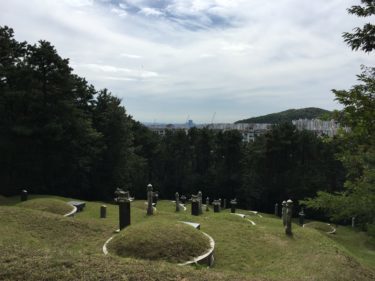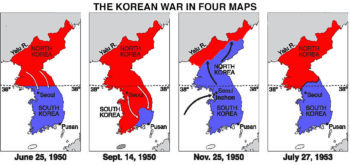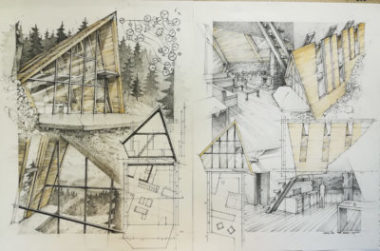 |
One of my relatives casually posing at The War Memorial of Korea in Seoul.
Butterflies
The butterfly effect says that single extra flap of wings could have altered the course of history.
Or you drop a 2000 sports history magazine on the street while you’re traveling in the year 1985 and the whole world goes bonkers.
Most know that Korea was torn in two at the 38th parallel following the Korean War. Millions perished, hundreds of thousands displaced, and the ideological dispute persists in 2017.
How am we—I, my family—here? Alive, while others are not. In America, while the rest of the family is not. Piecing an answer together has taken time.
 |
The past, overlooking the present.
For my family, it would seem, the 38th parallel isn’t the most important marker in the country. It’s much further south, far past Seoul and even further than Jeonju, where I am right now.
In June of 1950, the North Korean army blazes its way through most of the peninsula, capturing Seoul within weeks and pushing its way to the southern coast before finally being checked at the southeastern-most part of the country. As United Nations appointed general Douglas MacArthur, who had formerly oversaw the U.S. occupation of Japan following World War II, wrote on June 30:
“The (South) Korean army and coastal forces are in confusion, have not seriously fought, and lack leadership through their own means…The Korean army had made no preparations for a defense in depth.”
Young by a few years and not on the front lines, my grandfather is not among the fighters, student or not.
Hastily formed UN forces join with whatever troops the south could muster, including hundreds of student volunteers, many of whom would die in combat. Most are too young to have received proper identification and join the dust as unknowns.
The comparatively ragtag bunch form the defensive Busan perimeter around the southeastern port city, holding the lines in hopes of an increased commitment of support from the UN. My grandfather’s hometown of Miryang 밀양 is within that perimeter by less than 50 miles:
 |
Panel 2: Sept. 14, 1950 — The Busan Perimeter.
Too young and far enough south, my teenage grandfather survives the war and apparently has the urge to be involved afterwards. Hanging around the U.S. army forces, he manages to pick up enough English to work as a de facto translator.
Whether for food, protection, patriotism, or all of the above, his actions have implications that last for decades.
Fast-forwarding through the rest of the war and beyond, my grandfather finds himself applying for a graduate degree scholarship in the U.S.—the South, still rebuilding, has undergrad programs in the post-war period, but grad school is hard to come by.
His application is not the strongest, but his English is the best. So in 1965, off he goes to America with his eldest son—my father—with the desire to return.
So which one is the butterfly?
My grandfather’s age during the war?
His hometown that was within the September 1950 Busan perimeter?
General MacArthur’s decision to intervene and push the northern troops back?
My grandfather talking to American soldiers?
The Fulbright scholarship he received?
Or all of the above?
Cool Stuff
 |
Saw this on reddit/architecture. 36 hours I had it up for sale. Internet’s a crazy thing sometimes. Link
News
What makes a billionaire? Link
Why would you flush money down the toilet? Link
For Fun
China’s camel milk mogul. Link
“I photograph airplanes for a living.” Link

Leave a Reply